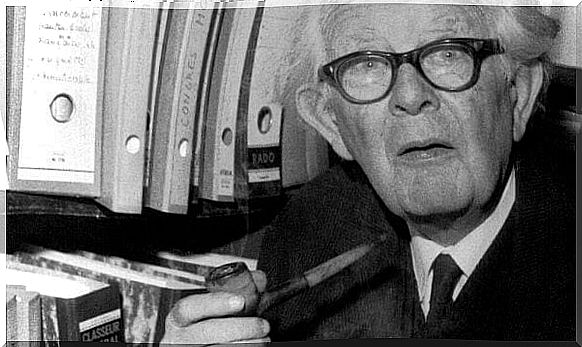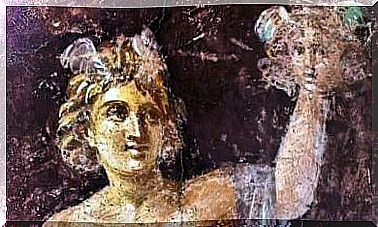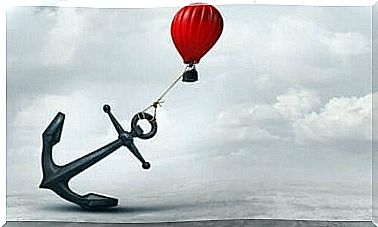Learn About Cognitive Development In Children Through The Eyes Of Piaget

Jean Piaget is a nuclear reference point in the study of cognitive development in children. He devoted his entire life to studying childhood, even his own children, to uncover the secrets of development. He is also known, along with Lev Vygotsky, as one of the fathers of constructivism.
One of Jean Piaget’s most famous theories is his division of children’s cognitive development into four different stages. He developed this to look for a theory that could explain the general development of an infant.
However, we now know that it leaves too many unevaluated aspects to be accepted as a theory of general development. But this classification is a useful guide for understanding how we develop our logical-arithmetic capacity in childhood.
Stages of cognitive development in children
Many psychologists believed that development was an accumulative phenomenon, in which new behavior and cognitive processes were generated.
On the other hand, Piaget, after his studies, developed a development theory based on qualitative leaps. Here the child would accumulate capacities, but sooner or later the accumulation would change the child’s way of thinking qualitatively.
Piaget divided infant cognitive development into three phases with a series of sub-stages, and later completed it by expanding it to four. These four stages are: (a) sensorimotor stage, (b) preoperative stage, (c) concrete operational stage and (d) formal operational stage.
Sensorimotor stage
This stage is before the appearance of the language, from birth until the child is about two years old. This period is characterized by the child’s reflexive capacity.
A child’s life during this period is based on linking their perceptual ability to the “engine”. In the child’s mind, there are only practical concepts such as knowing what to do, what to eat or how to get his mother’s attention.
Little by little, throughout this period, the child generalizes the events in his environment and creates ideas about how the world works.
When these ideas are crossed, the child develops the idea of the duration of objects and understands that objects exist as entities that are foreign to him or her.
Before they develop this idea, children believe that what they cannot see, hear or touch does not exist.
The end of this stage is marked by the behavior of the language. Language in a child means a profound change in their cognitive abilities.
This is usually accompanied by the semiotic function: the ability to represent concepts through thought. The child would go from having a purely practical mind, to a mind that also works on a representative level.
Preoperative stage
We can set this stage when the children are between two years and seven years old. Here we are in a transition period where the child begins to work with his semiotic ability.
Even if the child has already achieved a level of representation, his or her mind is still different from that of an adult. Here we come face to face with their “egocentrism”.
The child is “self-centered” because their thinking is completely self-centered. The child is not able to separate the physical from the mental, nor the objective from the subjective.
For him or her, their subjective experience is the objective reality that exists in the same way for all individuals. This shows us something that is still missing in Theory of the mind. From the age of 4, we begin to lose this egocentricity and develop a theory of the mind.

At this stage we also see problems. The child must be able to understand that the universe is changing. They are able to understand states, but not the transformation of matter.
An example of this is when a child at this stage sees a glass full of water, and we pour the water into a narrower but taller glass. The child will think that there is more water than before. They are not able to understand that changing something does not change the amount of existing material.
Specific operational stage
This period includes the years between 7 and 11 or 12 years. At this stage, the child has managed to leave the full confidence they had in their senses behind. Here we can see the development of concepts, including how changing the shape of something does not change the amount of material.
The child begins to construct a logic of classes and relationships unrelated to sensory data. The child understands changes and that they can occur in the opposite direction (to add instead of remove, for example).
And an important aspect is that the child will be able to perform these operations by representing them in his mind without having to perform them with actual objects.
Although they control operations and logic, they can only perform them with certain objects they are familiar with. They cannot theorize about things they do not know or that are beyond their sensory knowledge. The child will get this ability in the next phase.
Formal operational stage
This is the last developmental stage, where the child becomes an adult on a cognitive level. This stage is characterized by the acquisition of scientific ways of thinking. While the child can justify real things, he or she can now also justify the possible.

This period is characterized by the ability to make hypotheses and examine the possible consequences of these hypothetical possibilities. The child has perfected his test procedures and does not accept opinions without examining them.
The child will begin to acquire new knowledge and intellectual tools. These will allow him or her to develop as a competent adult in society.
But from this point on , they will not experience any other qualitative leap.
While the child may become faster or more precise with their mental operation, they will still think the same way.
Now that we are familiar with Piaget’s theory of cognitive development in children, do you think that children actually develop in this way? Or is it wrong to say it this way when it comes to explaining human development in its entirety?









